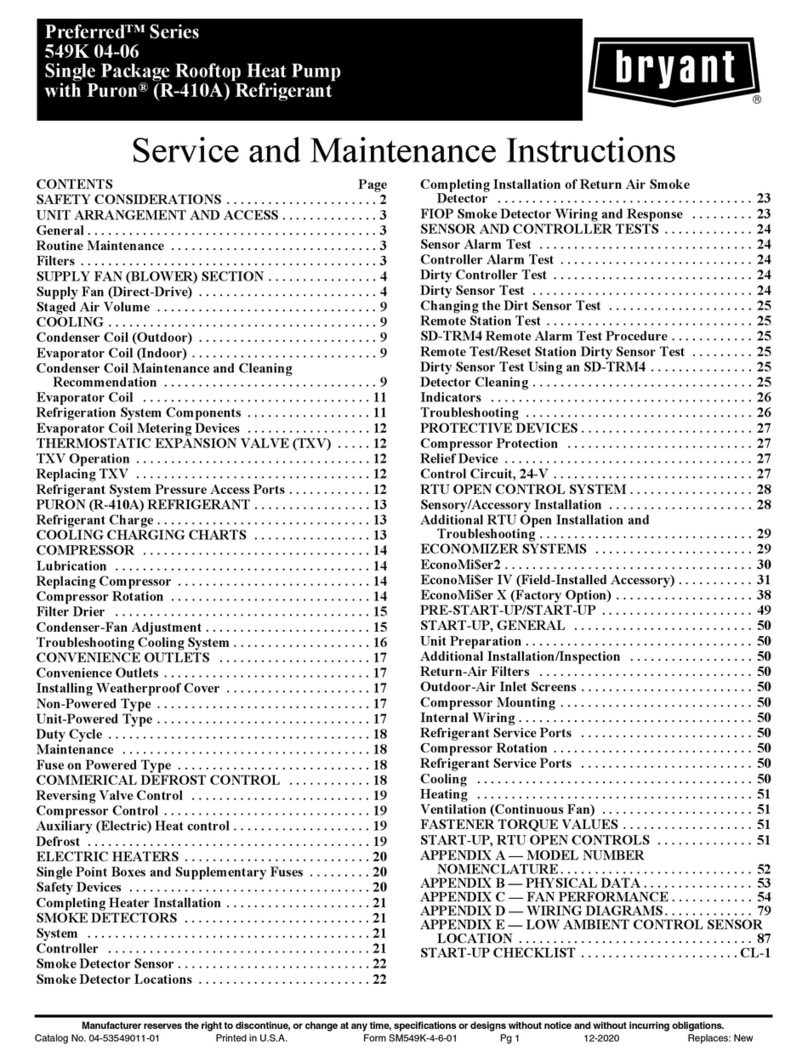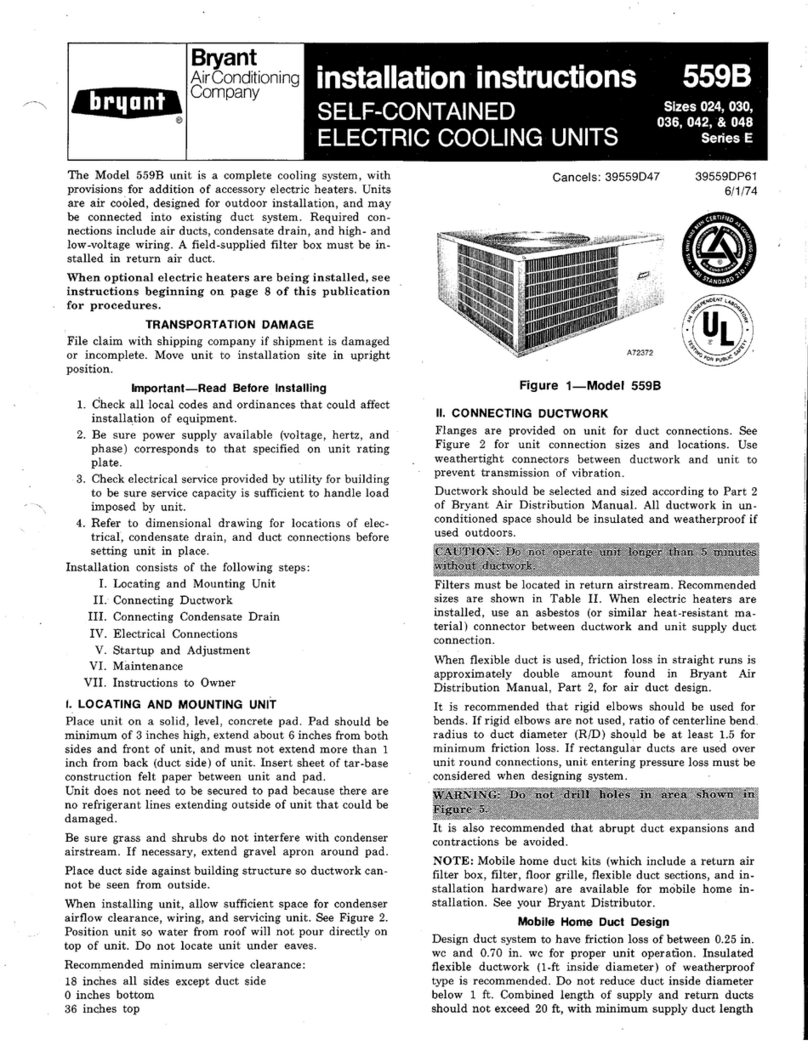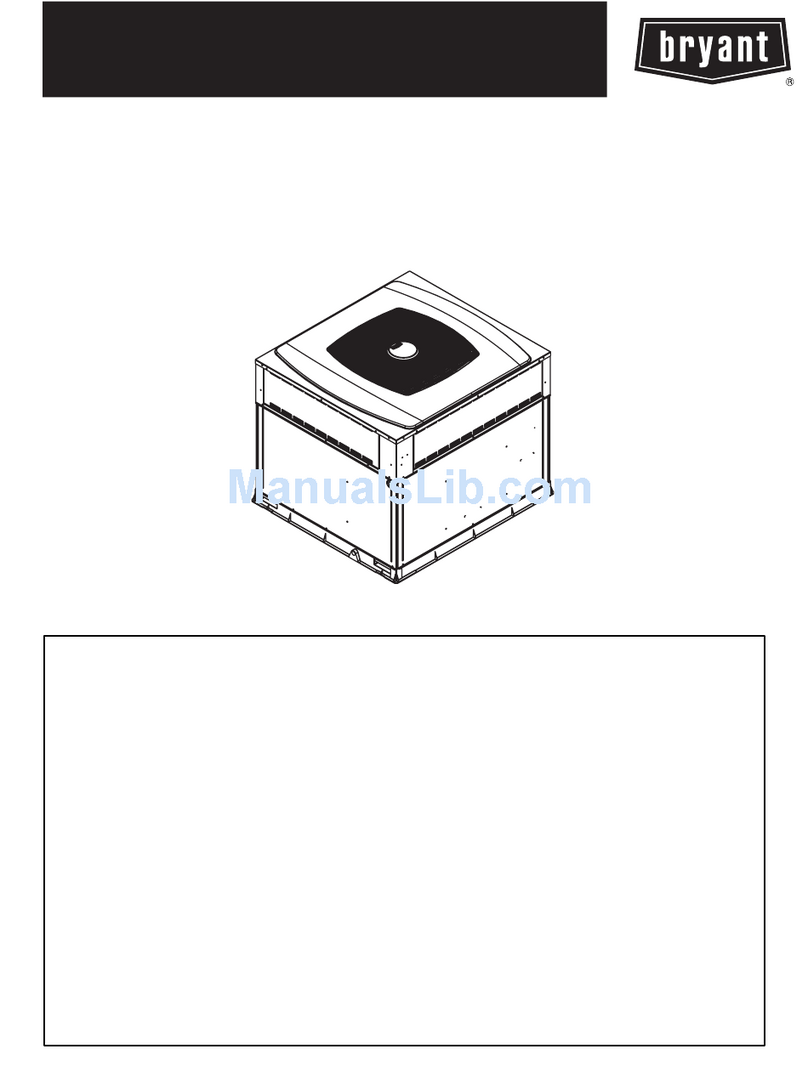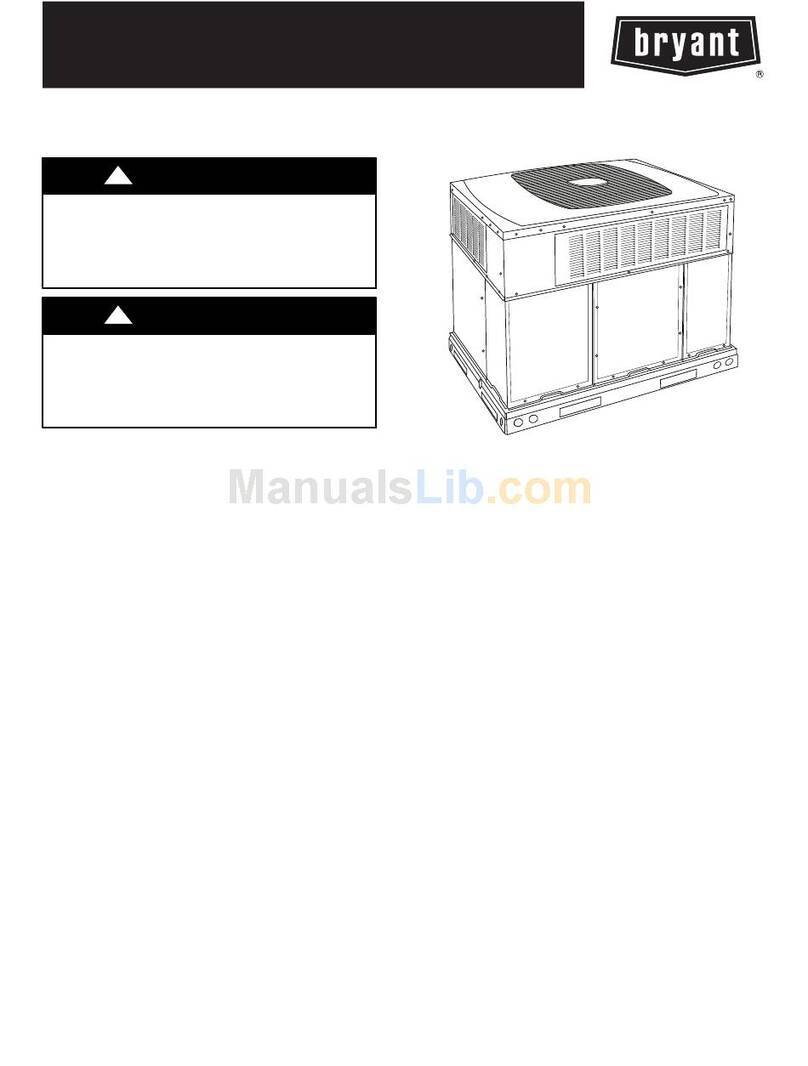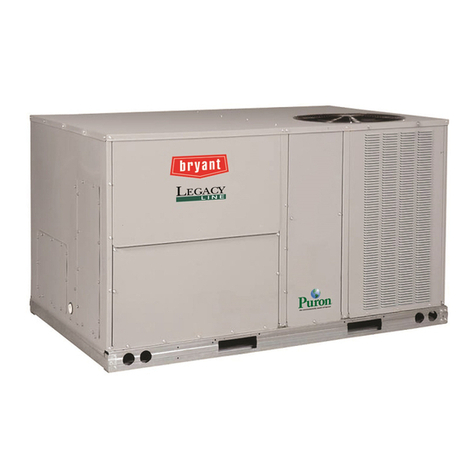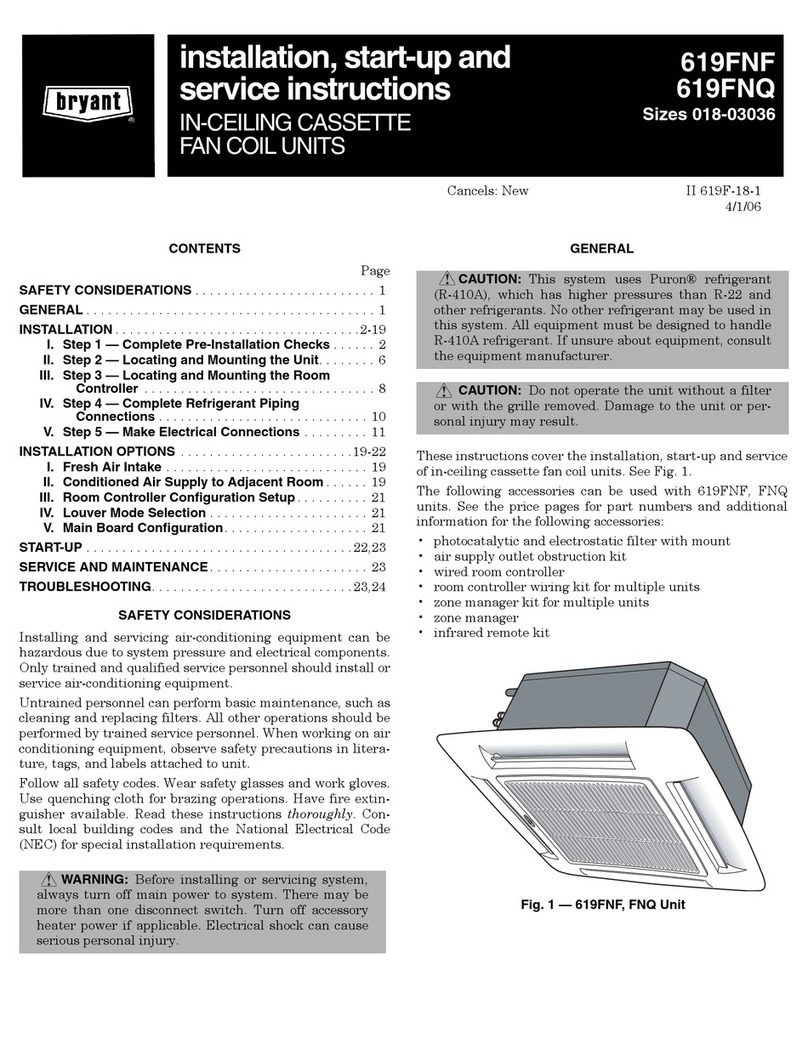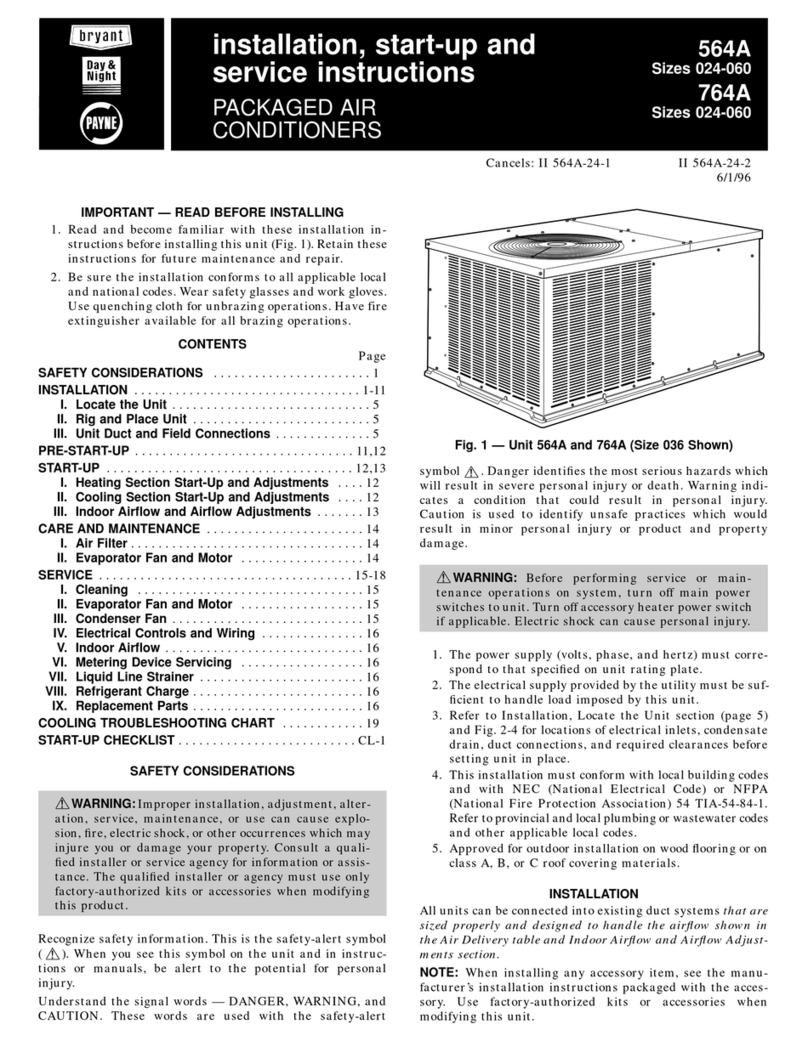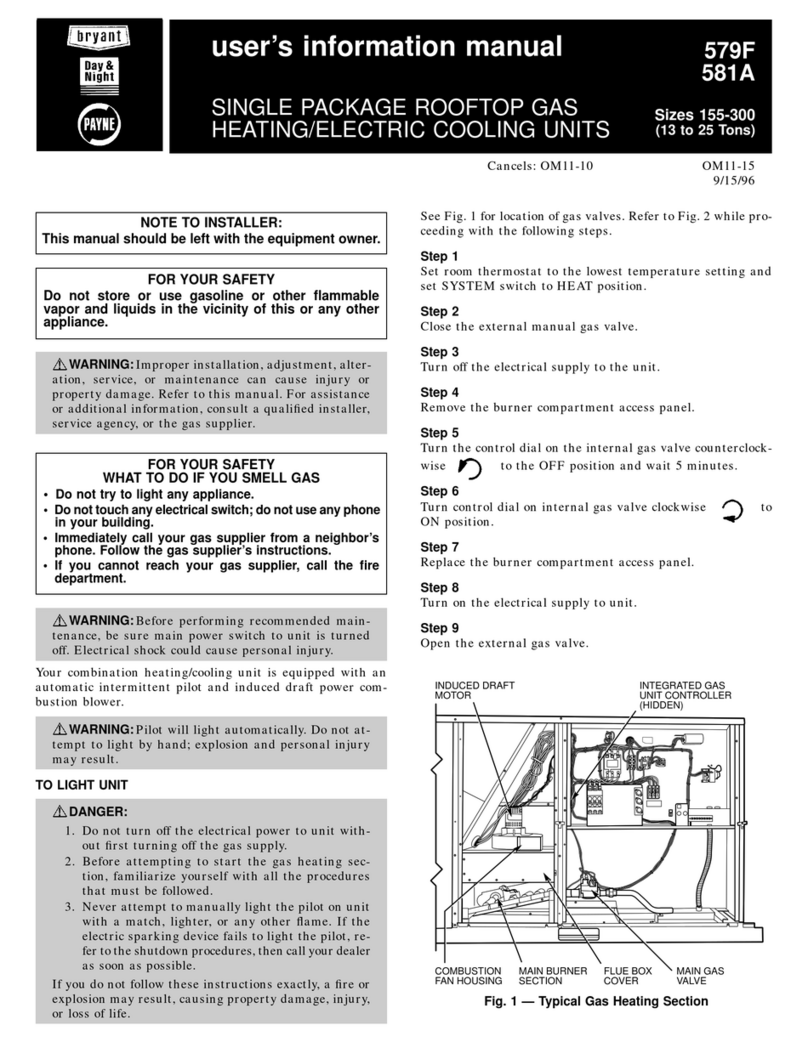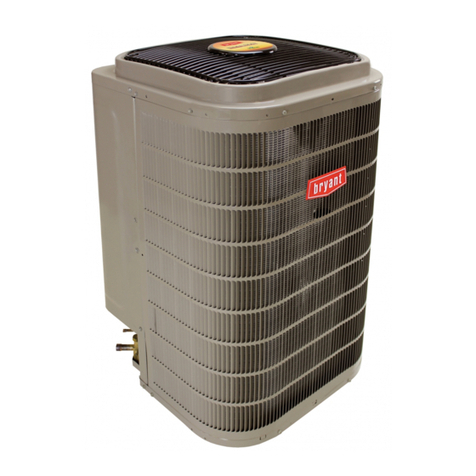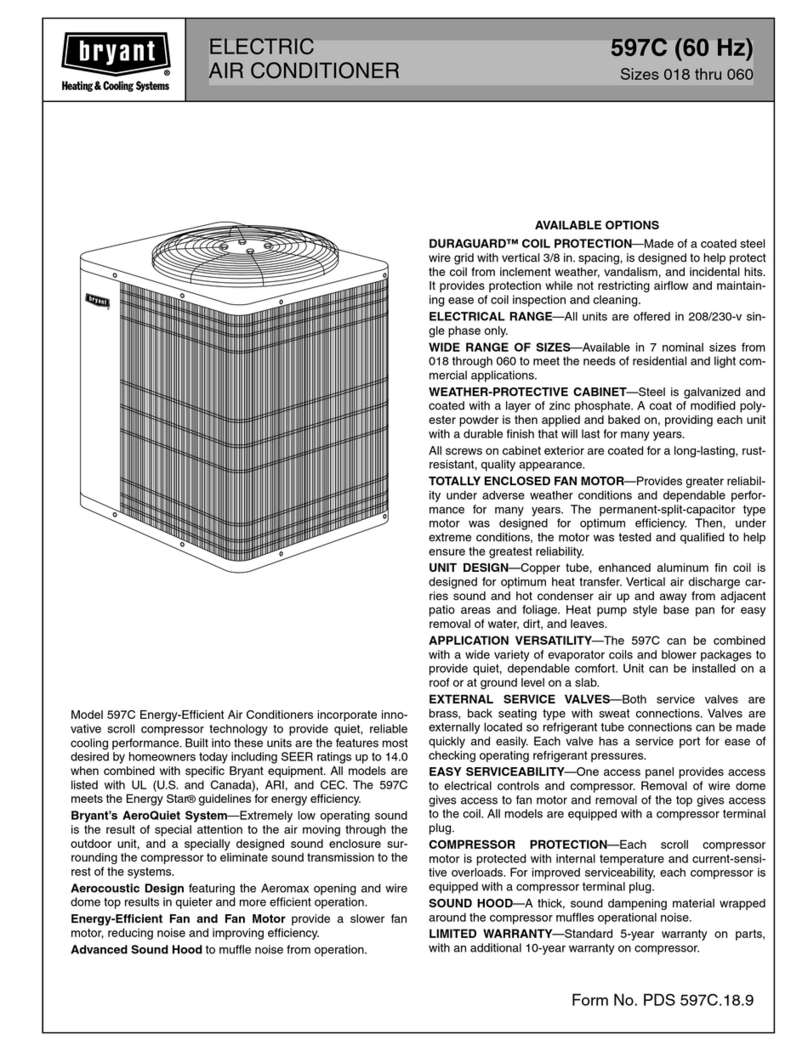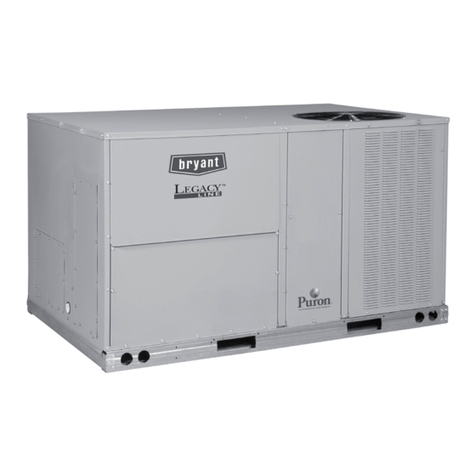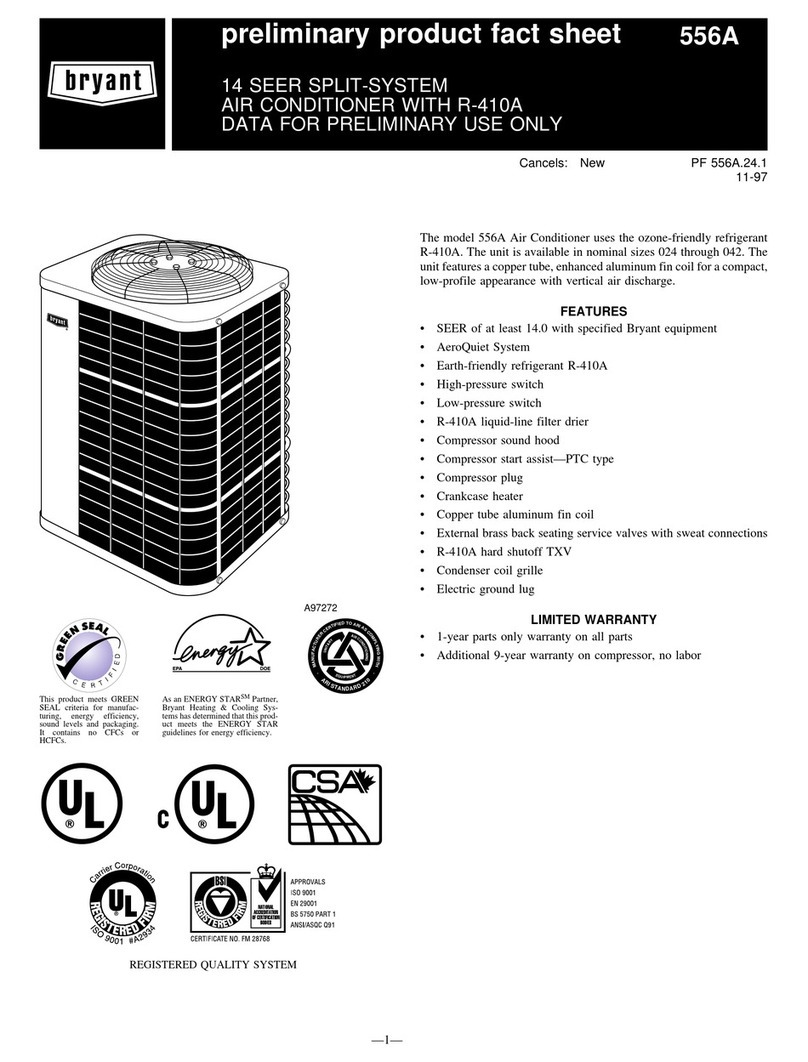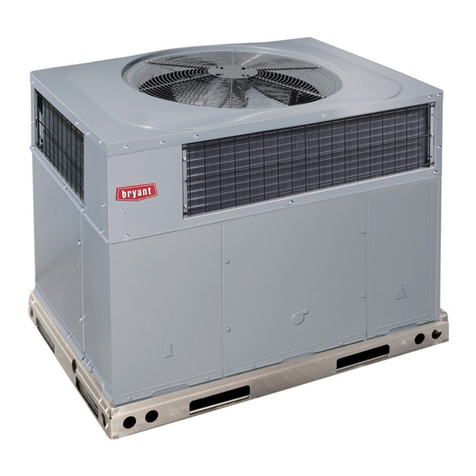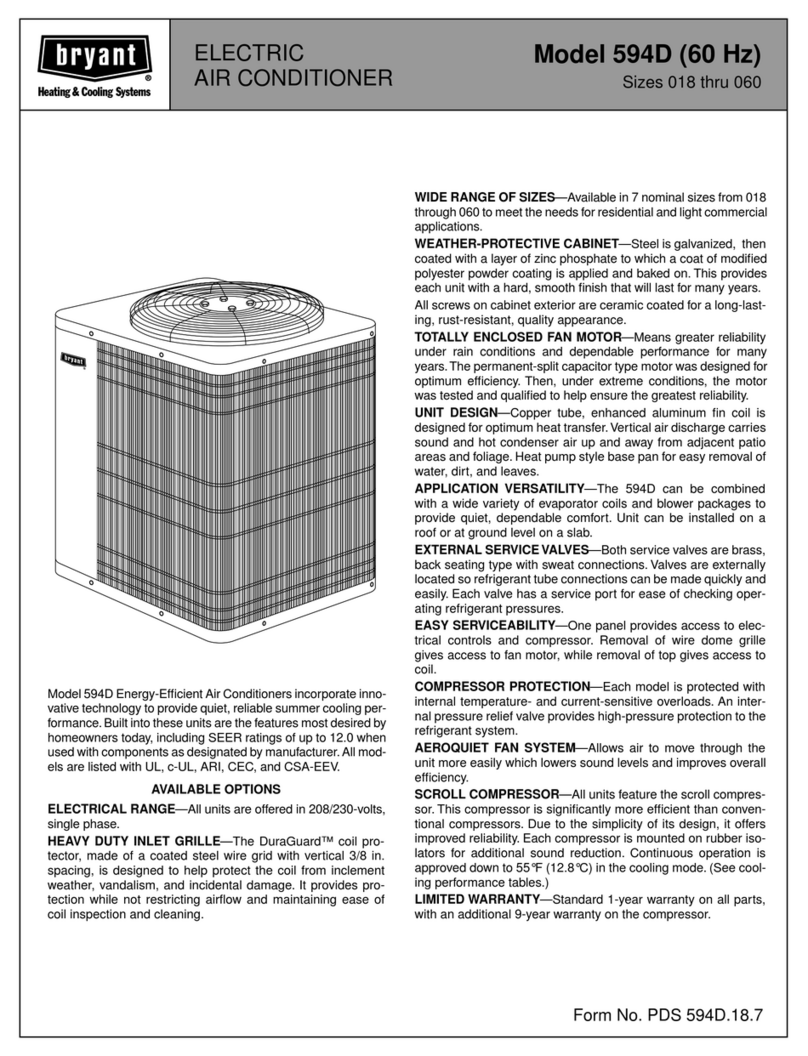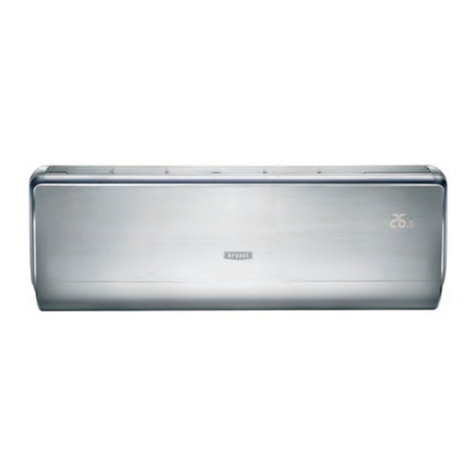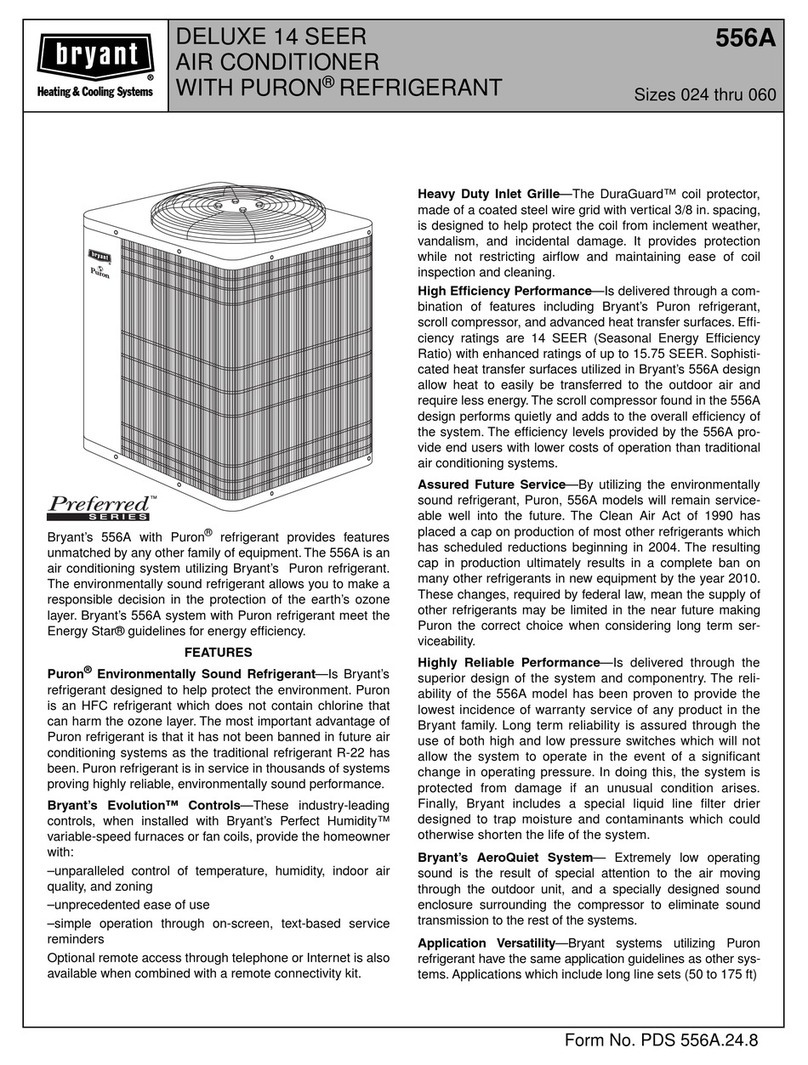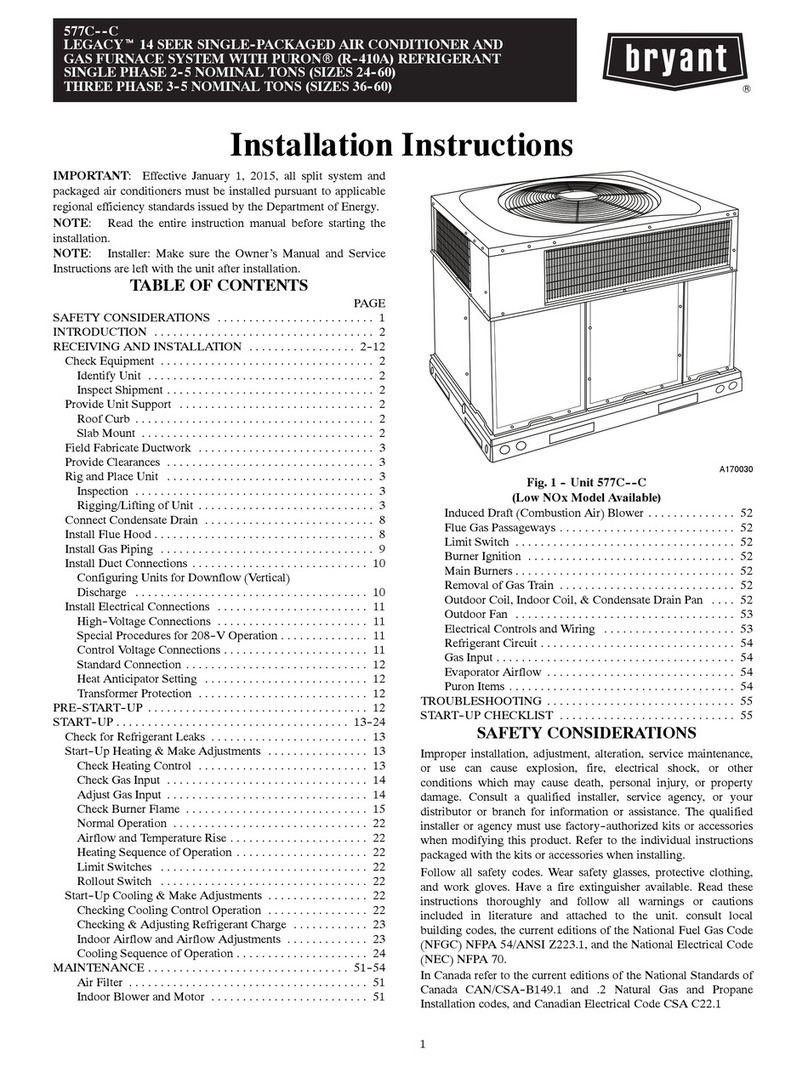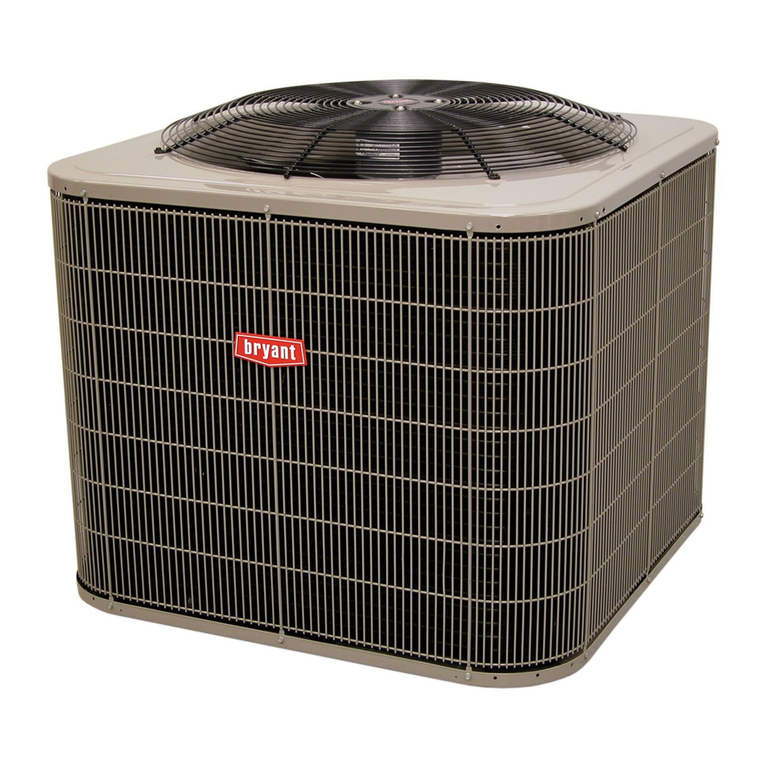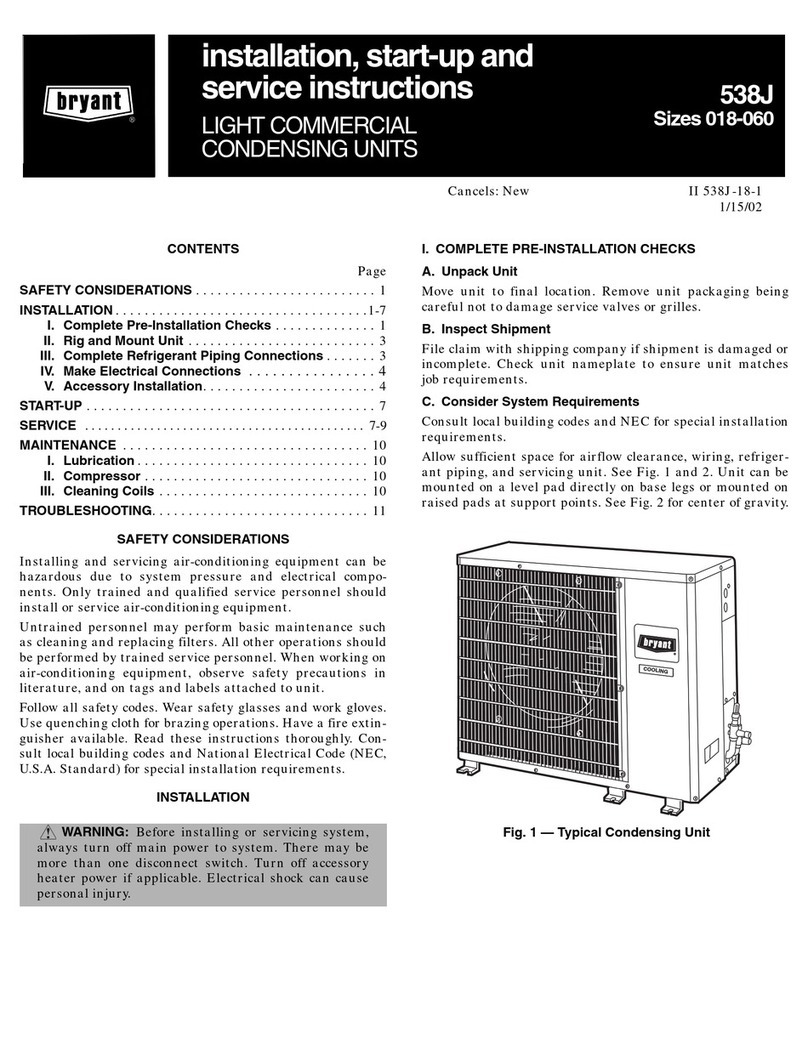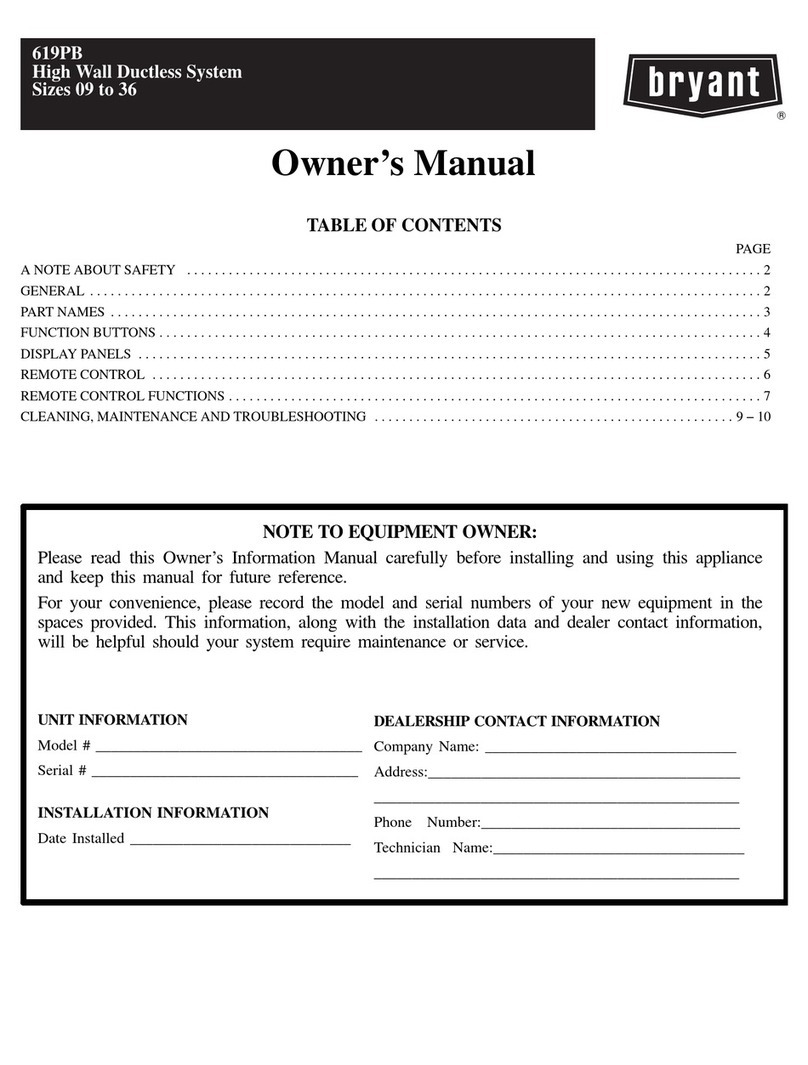
16
The sound made by a reversing valve as it begins or ends defrost is
a “whooshing” sound, as the valve reverses and pressures in system
equalize. An experienced service technician detects this sound and
uses it as a valuable troubleshooting tool.
Using a remote measuring device, check inlet and outlet line
temperatures. DO NOT touch lines. If reversing valve is operating
normally, inlet and outlet temperatures on appropriate lines should
be close to each other. Any difference would be due to heat loss or
gain across valve body. Temperatures are best checked with a
remote reading electronic--type thermometer with multiple probes.
Route thermocouple leads to inside of coil area through service
valve mounting plate area underneath coil. Fig. 12 and Fig. 13
show test points (TP) on reversing valve for recording
temperatures. Insulate points for more accurate reading.
If valve is defective:
1. Shut off all power to unit and remove charge from system.
2. Remove solenoid coil from valve body. Remove valve by
cutting it from system with tubing cutter. Repair person
should cut in such a way that stubs can be easily re--brazed
back into system. Do not use hacksaw. This introduces
chips into system that cause failure. After defective valve is
removed, wrap it in wet rag and carefully unbraze stubs.
Save stubs for future use. Because defective valve is not
overheated, it can be analyzed for cause of failure when it is
returned.
3. Braze new valve onto used stubs. Keep stubs oriented
correctly. Scratch corresponding matching marks on old
valve and stubs and on new valve body to aid in lining up
new valve properly. When brazing stubs into valve, protect
valve body with wet rag to prevent overheating.
4. Use slip couplings to install new valve with stubs back into
system. Even if stubs are long, wrap valve with a wet rag to
prevent overheating.
5. After valve is brazed in, check for leaks. Evacuate and
charge system. Operate system in both modes several times
to be sure valve functions properly.
A10189
Fig. 12 – Reversing Valve
(Cooling Mode or Defrost Mode, Solenoid Energized)
Liquid Line Filter Drier
Filter driers are specifically designed for R--410A refrigerant. Only
operate with the appropriate drier using factory authorized
components.
There is a liquid line drier located inside the unit in the compressor
section. The liquid line drier also acts as a strainer.
Suction Line Filter Drier
The suction line drier is specifically designed to operate with
R--410A, use only factory authorized components. Suction line
filter drier is used in cases where acid might occur, such as burnout.
Heat pump units must have the drier installed between the
compressor and accumulator only. Remove after 10 hours of
operation. Never leave suction line filter drier in a system longer
than 72 hours (actual time).
Accumulator
The accumulator is specifically designed to operate with R--410A
pressures; use only factory--authorized components. Under some
light load conditions on indoor coils, liquid refrigerant is present in
suction gas returning to compressor. The accumulator stores liquid
and allows it to boil off into a vapor so it can be safely returned to
compressor. Since a compressor is designed to pump refrigerant in
its gaseous state, introduction of liquid into it could cause severe
damage or total failure of compressor.
The accumulator is a passive device which seldom needs replacing.
Occasionally its internal oil return orifice or bleed hole may
become plugged. Some oil is contained in refrigerant returning to
compressor. It cannot boil off in accumulator with liquid
refrigerant. The bleed hole allows a small amount of oil and
refrigerant to enter the return line where velocity of refrigerant
returns it to compressor. If bleed hole plugs, oil is trapped in
accumulator, and compressor will eventually fail from lack of
lubrication. If bleed hole is plugged, accumulator must be changed.
The accumulator has a fusible element located in the bottom end
bell. (See Fig. 14.) This fusible element will melt at 430_F/221_C
and vent the refrigerant if this temperature is reached either internal
or external to the system. If fuse melts, the accumulator must be
replaced.
To change accumulator:
1. Shut off all power to unit.
2. Recover all refrigerant from system.
3. Break vacuum with dry nitrogen. Do not exceed 5 psig.
NOTE: Refer to appropriate sections of Service Manual for
instructions.
A10188
Fig. 13 – Reversing Valve
(Heating Mode, Solenoid De--Energized)
PERSONAL INJURY HAZARD
Failure to follow this caution may result in personal injury.
Wear safety glasses, protective clothing, and gloves when
handling refrigerant.
CAUTION
!
4. Remove accumulator from system with tubing cutter.
5. Tape ends of open tubing.
6. Scratch matching marks on tubing studs and old
accumulator. Scratch matching marks on new accumulator.
Unbraze stubs from old accumulator and braze into new
accumulator.
